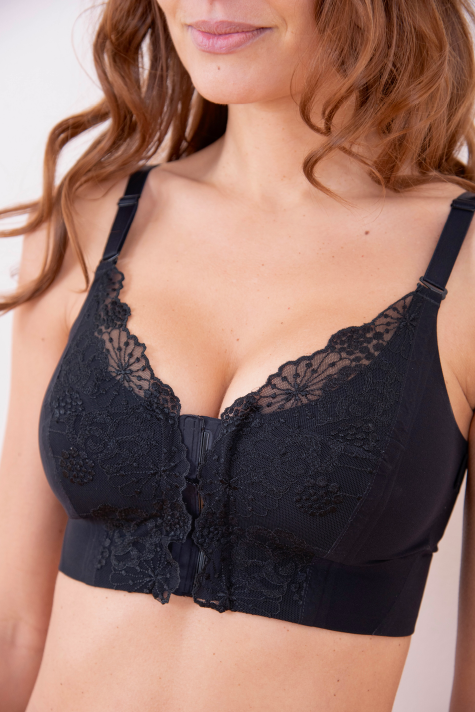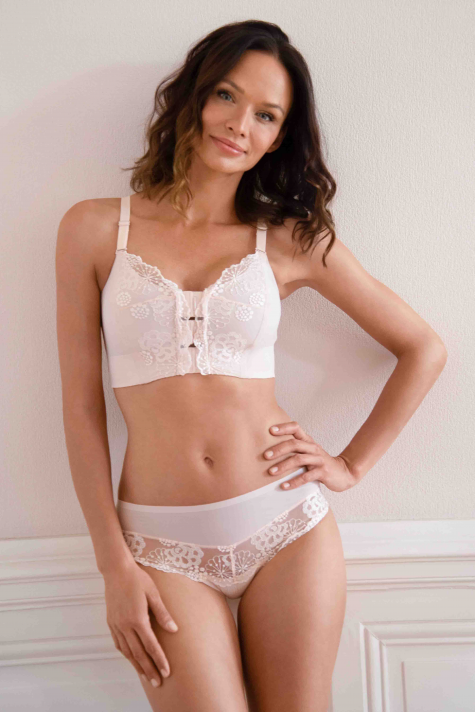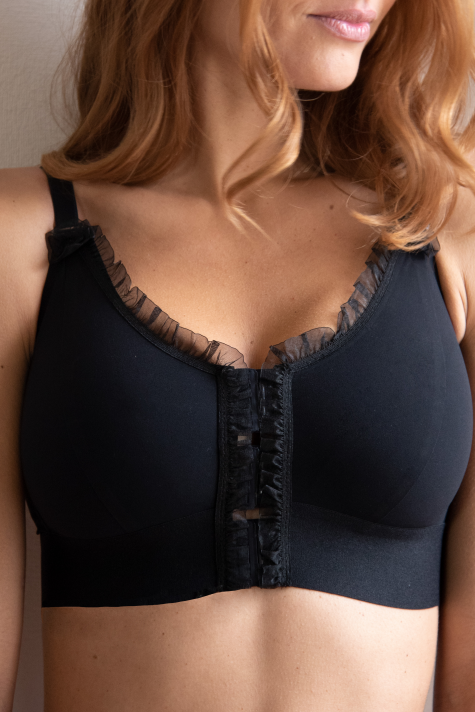True or false about breast surgery - Dr. Pierre Bogaert
- 3670 views
- 0 Comments

Dr. Pierre Bogaert is an aesthetic surgeon in Nantes at the Brétéché Clinic and the Carré Esthétique Lafayette. He answered some preconceived ideas about breast surgery in the form of True or False. You can also find the interview on YouTube or on our Instagram account.
> You have to be over 18 to have breast surgery
P.B: False, especially in the case of patients with malformations, asymmetries that often reveal themselves quite early in adolescence. It can be useful to operate on the patient so that her development is in the right direction! Of course, in this situation, parental permission is required from both parents. In the case of cosmetic surgery, the question of waiting until the age of majority is inevitably posed, in order to finally reach a majority on paper and also a certain psychological maturity.
> Healing is long and painful
P.B.: False. Healing is a natural physiological process that lasts on average between 12 and 18 months. On the painful side, normal wound healing is not painful. There may be an itchy, scratchy feeling around the scar which is completely natural. This is simply the inflammatory process which generally takes place between 3 and 6 months after the operation. On the other hand, sometimes these scars can actually be painful, in the context of a pathological context that is outside the natural process.
> It is no longer possible to breastfeed after a breast augmentation
P.B.: False. After a breast augmentation it is perfectly possible to breastfeed.
However, there are different approaches, different areas through which the breast can be operated. The approach at the areola is an approach where we will be more easily exposed to the milk ducts that lead the milk from the mammary gland to the nipple. In certain situations these milk ducts can be damaged and therefore responsible for a difficulty in breastfeeding in the context of the placement of breast implants.
In the case of submammary or axillary approaches at a distance from these ducts, the possibility of breastfeeding is of course maintained. In the case of breast reduction surgery, which will reduce the breast and in particular the gland, in this situation the ducts are often damaged. The possibility of breastfeeding is therefore greatly reduced or even impossible!
> The operation can leave different types of scars
P.B: True. Most of the time the scar is normal, i.e. fine, it is red for the first few months and eventually turns white. In certain cases, particularly on white, very white or black skin, we can encounter pathological scars of two kinds: a hypertrophic scar. It is a scar that will be thick, red, painful and evolving, which ends up involuting a little, which can be responsible for pain and a real aesthetic discomfort and of course all types of scarring is evoked in the pre-operative consultation.
> You have to change your prostheses after a certain time
P.B: True. Breast implants are implantable medical devices and therefore foreign bodies. They may have the best qualities close to the texture of a breast, but when they are inserted at a given moment, the patient's breast will change.
With weight gain, weight loss, shocks in the intimate life, during sports and therefore the prostheses will be subjected to mechanical constraints. At present, prostheses that have a life span of 10 years will not be systematically changed, but the patient will be offered an imaging scan every two years to monitor the state of the prosthesis, to check for a shell, i.e. a rigid capsule around the implant. Of course, there may be cases where the prostheses will have to be changed before 10 years. For all these reasons, the lifespan can be variable and therefore in these cases the change can be earlier.
Apart from all that, beyond 10 years, we can estimate that a prosthesis can sometimes have a lifespan of 15 or even 20 years. We will not wait until there is a major problem such as a broken prosthesis. It is always easier to change implants that have few problems than implants that are completely ruptured.
> Post-operative lingerie is part of the healing process
P.B: True. Somehow the support of a comfortable and technically supportive lingerie allows to decrease the shearing force on the scars, allows to decrease the weight of the implant on the scar and thus to participate in the healing process being relatively soft and going on in a correct way, without mechanical constraints.
> In France there is a lot of emphasis on lingerie
P.B: True, this may not have been the case immediately, but with the lingerie that has developed in the technical field of different types of fabric, and particularly at Embody, beyond the technical aspect of refinement, this importance has taken on greater importance. It is important to consider that patients need postoperative lingerie that is comfortable and their image for their breasts is just as important dressed as undressed.
> Lipofilling gives the same result as breast implants
P.B: I would say true and false! The aim of lipofilling, like breast augmentation by prostheses, is to increase the volume of the breast. On the other hand, the wish of some patients is to be able to live in the neckline, which is sometimes called the social breast; the prosthesis will be able to provide this thanks to its power to push forward, which lipofilling could provide a little less.
It is possible to have a very natural result with prostheses as with lipofilling. The difference is that there is a foreign body with a predefined prosthetic volume, which is not necessarily possible with Lipomodelling.
> The surgeon can refuse a patient's request
P.B: True, there may be requests that are unfounded. Requests from a fragile patient or within the framework of certain dysmorphophobia where the image of the patient's body is not at all the reality, and therefore this is something that we must try to identify during the consultation in order to be able to detect all patients who could be a bad candidate for breast surgery. A patient who might be dissatisfied or simply not accept the surgery and experience things even worse afterwards. Hence the importance of knowing how to say no if enough elements are present to lead to a failed surgery.
> You recommend Embody products to your patients
P.B: I prescribe Embody products in my breast surgery range, it is a very technical lingerie with a comfortable fabric. I have excellent feedback from my patients, also on the design of the different models that are offered. It's a lingerie that is both post-operative and can be worn in the daily life of the patient, and even in sports. So this versatility is something that is very satisfying for patients at the moment.
> The final word?
P.B: For the final word, I think that postoperative lingerie has its place in the overall care of a patient in the context of breast surgery and is an integral part of the care, the course and the patient experience, for a surgery that can sometimes be stressful. Therefore, successful surgery also requires lingerie that is perfectly adapted to the patient.












comments (0)